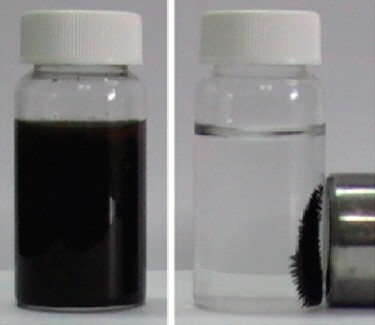
We can get a hint of the power coming from longer-term nanotech by seeing what is being discovered today on how to use some of the new materials becoming available. Many of us have been intrigued with graphene, a one-atom-thick planar sheet of bonded carbon atoms. It’s no surprise that exciting applications are being found already, such as Nanotechweb’s report on work in South Korea:
…Kwang Kim, In-Cheol Hwang and colleagues at Pohang University of Science and Technology have synthesised a new type of magnetite composite based on reduced graphene oxide (RGO). The hybrid material, which is superparamagnetic at room temperature, can remove over 99.9% of arsenic in a sample, and reduce its concentration to below 1 ppb – as measured by inductively coupled plasma (ICP) techniques.
The magnetite-RGO composite can be dispersed in water. Once it has adsorbed arsenic, it can quickly be removed from a sample using a permanent hand-held magnet (with a strength of 20 mT) within a fraction of a minute.
Probably you already known that arsenic is a natural contaminant in water in parts of the western U.S. and in south Asia. This is a huge problem and causes very serious health problems. Let’s hope this helpful use of graphene is just the start of a great career for this nanomaterial, first in simple applications like this one, and later as part of more complex molecular machine systems. (HT to Meridian Nanotechnology and Development News) —Chris Peterson
